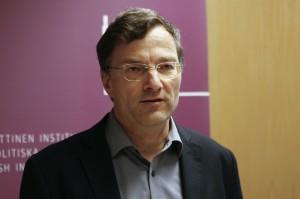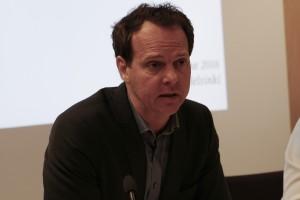Conflicts and resolution efforts in the Middle East are often portrayed as being shaped by a zero-sum mentality. The fierceness with which the Syrian regime, as well as different rebel groups, have struggled for a ”victory solution” during the last years corroborates such a view. Furthermore, the pre-eminent role of Alawis (a Shiite sect) in the Syrian armed forces as well as the dominance of radical Sunni Muslims in the rebel militias adds a significant sectarian dimension to this power struggle. This setting is aggravated by regional interference, mainly by Iran and Hezbollah on the regime’s side and by the Sunni states of Saudi Arabia, Qatar, UAE and Turkey abetting different rebel factions, including their initial support for the jihadist militia Da’ish (ISIS). Against this complex backdrop a suitable conflict resolution model is still missing, despite several rounds of UN-sponsored talks since mid-2012. This seminar investigates what lessons could be learned from the Lebanese power-sharing agreement (the 1989 Taif peace accord) and be transposed to the Syrian carnage . It assesses whether the circumstances, in 2016, are ripe for a political solution and for engaging into meaningful peace negotiations.
Speaker: Stephan Rosiny, Research Fellow, GIGA Institute of Middle East Studies, Hamburg
Comments: Wolfgang Mühlberger, Senior Research Fellow, the Finnish Institute of International Affairs
Chair: Teija Tiilikainen, Director, the Finnish Institute of International Affairs
Summary of the seminar
The event was opened by FIIA director Teija Tiilikainen, who gave a short account of the most recent developments in Syria, such as the collapse of the cessation of hostilities brokered by USA and Russia.
The guest speaker Mr. Stephan Rosiny, an expert on political Islam, the Middle East, and in particular Lebanon, started his presentation by accounting for what, in fact, has taken place in Syria since 2011. He pointed out that obviously the initial starting point must be the recognition that the Syrian people are suffering on a massive scale, with half of the population uprooted and several hundred thousand dead because of the conflict.
The description of this human and humanitarian disaster was followed by a periodization and characterization of the conflict since 2011: 1) the first phase in early spring 2011, with civil protests inspired by the so-called Arab Spring revolutions in the Middle East, and their fierce suppression by the Syrian regime. This phase, however, also witnessed the first instances of violence against the regime by more extreme actors; 2) the Sectarian Sunni-Shia civil war aspect, increasingly since summer 2011. At this point a Free Syrian Army composed of Syrian Arab Army defectors was established, this became an exclusively Sunni force. 3) By the end of 2011, the Syrian conflict acquired an altogether new dimension, as Salafism and international jihadist organisations started to become an increasingly significant component of the armed opposition. In this context, the Syrian civil war was framed by the international jihad movements as a war against heretics. 4) As another determining element, the Syrian civil war became an international conflict characterized by proxy armies, each serving their own particular interests and agendas. In terms of Russia and the USA, the Ukraine conflict created an unwelcomed context for great power rivalry that was now also fought on Syrian soil. 5) Finally, in recent years, the Syrian civil war has also become a stage for intra-Sunni and inter-jihadist conflict, where various jihadi factions are fighting for power and influence.
According to Mr. Rosiny, what has defined the conflict this far has been the victor solution mentality, that is, both the regime and the armed opposition have thought they are able to win the war in the end. However, the current stalemate indicates this will not happen, meaning that a political solution based on some form of power sharing is inevitable. In this respect Mr. Rosiny underscored the 12 Points of Communality model, a proposal presented by UN Syria negotiator Staffan de Mistura in March 2016. In this model, the goal is to preserve the integrity and unity of the Syrian state, based on the will of the Syrian people instead of that of external actors. However, according to Rosiny, the fragmentation of Syrian society has reached a level that cannot be ignored. The needed model thus points towards a consociational power sharing model, with proportional representation. This is conceived as a better solution than a federal arrangement, mainly because Syrian ethnic and confessional social structure does not allow neatly defined territories possessed by particular groups. Such an arrangement would also in all likelihood be very instable as it would induce external actors to intervene in their respective ‘spheres of influence’, in order to define territories and borders.
After Mr. Rosiny’s presentation, the event continued with comments by FIIA’s own Middle East expert, Mr. Wolfgang Mühlberger. He pointed out how it was difficult to come up with a suitable entry point to this multi-layered conflict. Mr. Mühlberger underscored the difficulty to design an initial point of agreement among the opposite players, and that this was an obvious reason why the war has the tendency to perpetuate itself. One such point of essential disagreement has of course been the future status of President Bashar al-Asad. Mr. Mühlberger also recalled his own experiences of living in Syria during the 1990s, emphasizing that in tandem with the historical richness of the Syrian society, there was a constant feeling of repression. In this sense, Mr. Mühlberger noted, the political system was more or less doomed unless a reform movement was inaugurated. He also referred to the violent history in Syria, in particular the armed conflict between the Syrian regime and the Muslim Brotherhood.
Finally, Mr. Mühlberger accounted for the evolution of the conflict in terms of negotiating actors. He stressed that the strong anti-Asad stance of previous years was softening; Iran was now accepted as a legitimate member of the negotiations, as well as an array of salafi and jihadi groups drawn within the Supreme Negotiation Committee brought together mainly by Saudi-Arabia. Russia emerged as an active military player duyring 2015 and an anti-ISIS coalition took shape with many internal disputes.
Following the presentation of the guest-speaker and the comments, the floor was opened for discussion. Of particular interest to the audience were issues related to the down-sides of (known) power-sharing arrangements, the question of post-conflict peace-keeping, the Saudi-Iranian rivalry, external leverage, the lack of international consensus, and the emergence of polarizing community narratives.


